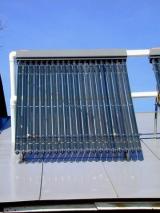Solar Heating and Cooling Technologies
Can I use solar thermal technology where I live?
Solar thermal technologies can be used anywhere in the United States. However, some regions naturally receive more intense and more reliable solar energy than others, depending on latitude, typical weather patterns, and other factors. The National Renewable Energy Laboratory provides maps that show the solar energy potential where you live.
Solar thermal technologies absorb the heat of the sun and transfer it to useful applications, such as heating buildings or water. There are several major types of solar thermal technologies in use:
- Unglazed solar collectors
- Transpired solar air collectors
- Flat-plate solar collectors
- Evacuated tube solar collectors
- Concentrating solar systems
In addition to the solar thermal technologies above, technologies such as solar photovoltaic modules can produce electricity, and buildings can be designed to capture passive solar heat.
Solar energy is considered a renewable resource because it is continuously supplied to the Earth by the sun. Visit EPA’s Clean Energy website to learn more about non-thermal solar technologies and the environmental benefits and impacts of solar energy.
Unglazed Solar Collectors
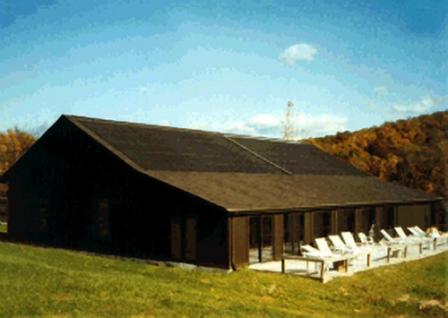
Credit: Albert Nunez, NREL 10651
An unglazed solar collector is one of the simplest forms of solar thermal technology. A heat-conducting material, usually a dark metal or plastic, absorbs sunlight and transfers the energy to a fluid passing through or behind the heat-conducting surface. The process is similar to how a garden hose, laying out in the open, will absorb the sun’s energy and heat the water inside the hose.
These collectors are described as “unglazed” because they do not have a glass covering or “glazing” on the collector box to trap heat. The lack of glazing creates a trade-off. Unglazed solar collectors are simple and inexpensive, but without a way to trap heat, they lose heat back to the environment and they operate at relatively low temperatures. Thus, unglazed collectors typically work best with small to moderate heating applications or as a complement to traditional heating systems, where they can reduce fuel burdens by pre-heating water or air.
Solar pool heating collectors are the most commonly used unglazed solar technology in the United States. These devices often use black plastic tubular panels mounted on a roof or other support structure. A water pump circulates pool water directly through the tubular panels, then returns the water to the pool at a higher temperature. Although used primarily for pool heating, these collectors can also pre-heat large volumes of water for other commercial and industrial applications.
How It Works
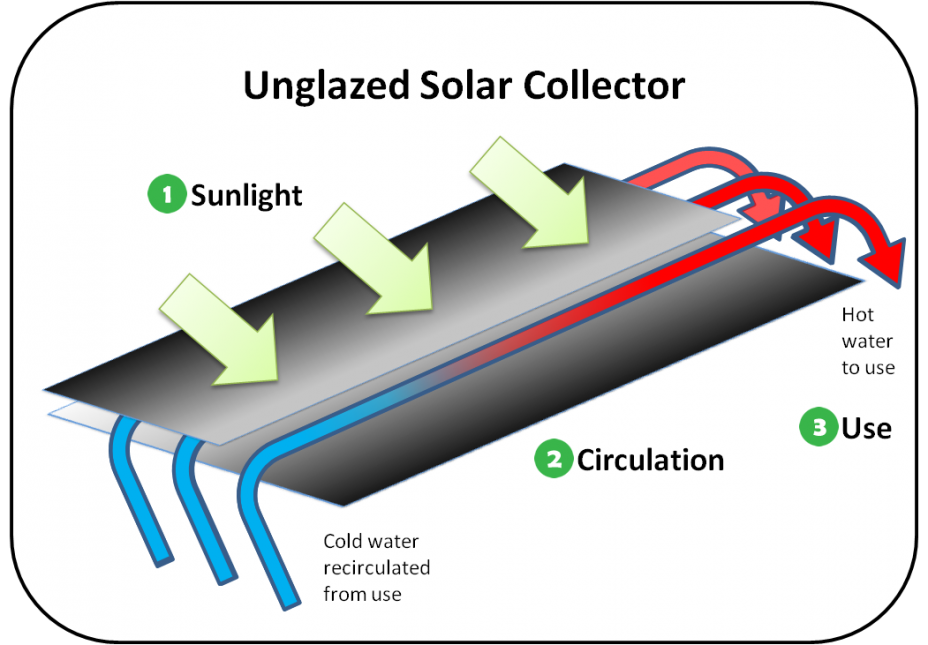
- Sunlight: Sunlight hits the dark material in the collector, which heats up.
- Circulation: Cool fluid (water) or air circulates through the collector, absorbing heat.
- Use: The warmer fluid is used for applications such as pool heating.
Learn More About Unglazed Solar Collectors
Potential Applications
Key End Use Sectors
Technical Resources
Transpired Solar Air Collectors
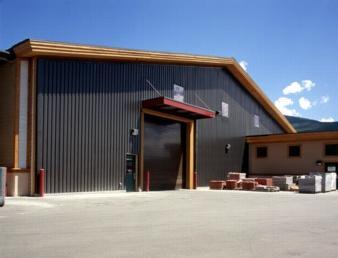
Credit: DOE Office of Energy Efficiency and Renewable Energy
Transpired solar air collectors typically consist of a dark-colored, perforated metal cladding material mounted on an existing wall on the south side of a building. A fan pulls outside air through the perforations and into the space behind the metal cladding, where the air heats to as much as 30°F-100°F above the ambient air temperature. The fan then pulls the air into the building, where it is distributed through the building’s ventilation system.
The transpired solar collector is a proven but still emerging solar heating technology. This type of technology is best for heating air and ventilating indoor spaces. It can also be applied to several manufacturing and agricultural applications, such as crop drying.
How it works
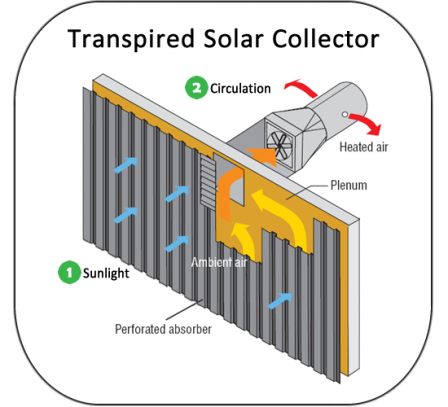
- Sunlight: Sunlight hits the dark perforated metal cladding, which heats up.
- Circulation: A circulation fan pulls air through the perforations behind the metal cladding, heating the air, which is then pulled into the building for distribution.
Learn More About Transpired Solar Air Collectors
Potential Applications
Key End Use Sectors
Technical Resources
Flat-Plate Solar Collectors
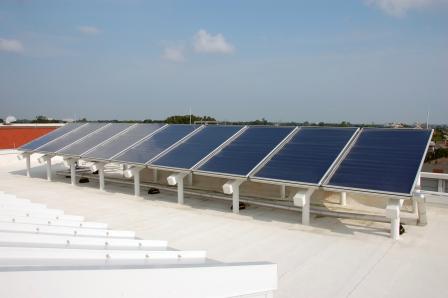
Credit: Joe Ryan, NREL 19690
Most flat-plate collectors consist of copper tubing and other heat-absorbing materials inside an insulated frame or housing, covered with clear glazing (glass). The-heat absorbing materials may have a special coating that absorbs heat more effectively than an uncoated surface.
Glazed flat-plate collectors can operate efficiently at a wider temperature range than unglazed collectors. Flat-plate collectors are often used to complement traditional water boilers, pre-heating water to reduce fuel demand. They can also be effective for space heating. Using a heat exchange system, they can reliably produce hot air for large buildings during daylight hours.
How It Works
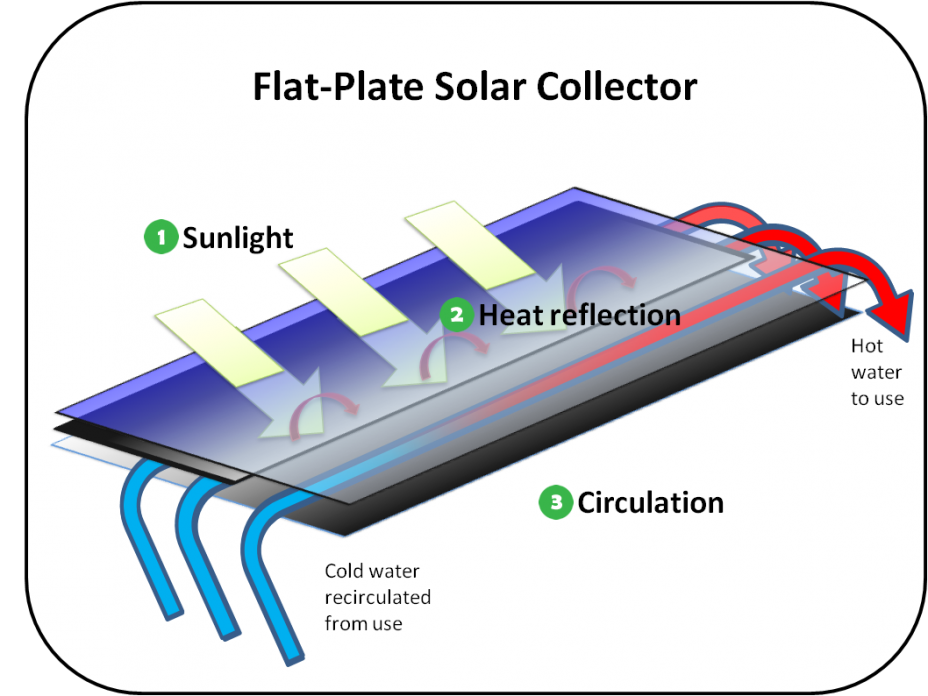
- Sunlight: Sunlight travels through the glass and hits the dark material inside the collector, which heats up.
- Heat reflection: A clear glass or plastic casing traps heat that would otherwise radiate out. This is similar to the way a greenhouse traps heat inside.
- Circulation: Cold water or another fluid circulates through the collector, absorbing heat.
Learn More About Flat-Plate Solar Collectors
Potential Applications
Key End Use Sectors
Technical Resources
Evacuated Tube Solar Collectors
Evacuated tube collectors feature thin, copper tubes filled with a fluid, such as water, housed inside larger vacuum-sealed clear glass or plastic tubes.
Evacuated tubes use the sun’s energy more efficiently and can produce higher temperatures than flat-plate collectors for a few reasons. First, the tube design increases the surface area available to the sun, efficiently absorbing direct sunlight from many different angles. Second, the tubes also have a partial vacuum within the clear glass enclosure, which significantly reduces heat loss to the outside environment.
How It Works
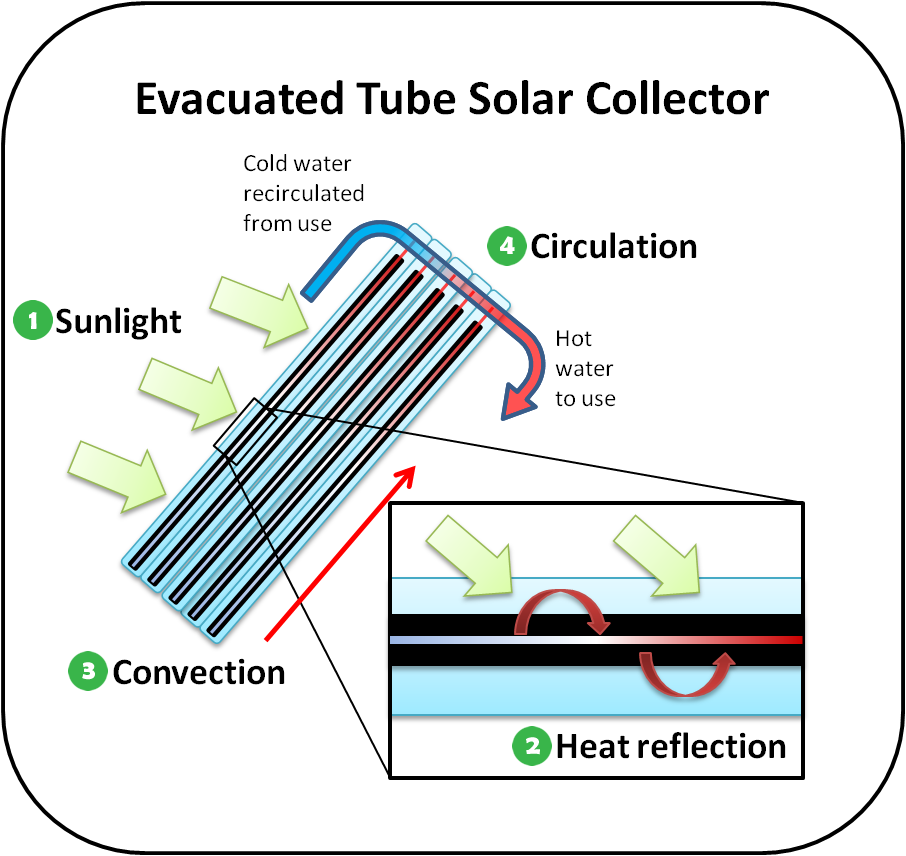
- Sunlight: Sunlight hits a dark cylinder, efficiently heating it from any angle.
- Heat reflection: A clear glass or plastic casing traps heat that would otherwise radiate out. This is similar to the way a greenhouse traps heat inside.
- Convection: A copper tube running through each cylinder absorbs the cylinder’s stored heat, causing fluid inside the tube to heat up and rise to the top of the cylinder.
- Circulation: Cold water circulates through the tops of the cylinders, absorbing heat.
Evacuated tube systems are typically more expensive than flat-plate collectors, but they are more efficient and can produce higher temperatures. Evacuated tubes can reliably produce very hot water for batch or on-demand water heating and for many industrial processes, and they can produce enough heat to handle almost any space heating or space cooling application.
Learn More About Evacuated Tube Solar Collectors
Potential Applications
Key End Use Sectors
Technical Resources
Concentrating Solar Systems
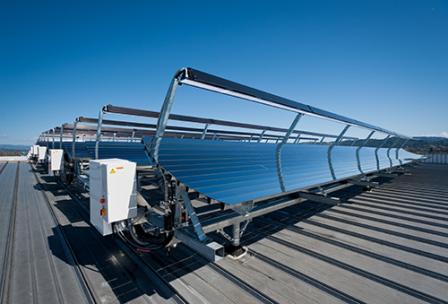
Credit: SunWater Solar
Concentrating solar systems work by reflecting and directing solar energy from a large area onto a small one. Smaller, reflective bowl-shaped arrays can produce water at a few hundred degrees for industrial or agricultural processes or for heating large volumes of water, such as resort swimming pools. Some arrays work with long parabolic troughs that concentrate sunlight onto a pipe running the length of the trough, which carries a heat transfer fluid. Even larger systems use fields of mirrors to reflect sunlight onto a central tower. These types of arrays produce high-pressure steam or other superheated fluids for a range of activities, from heat-intensive chemical processing to electric power generation.
How It Works
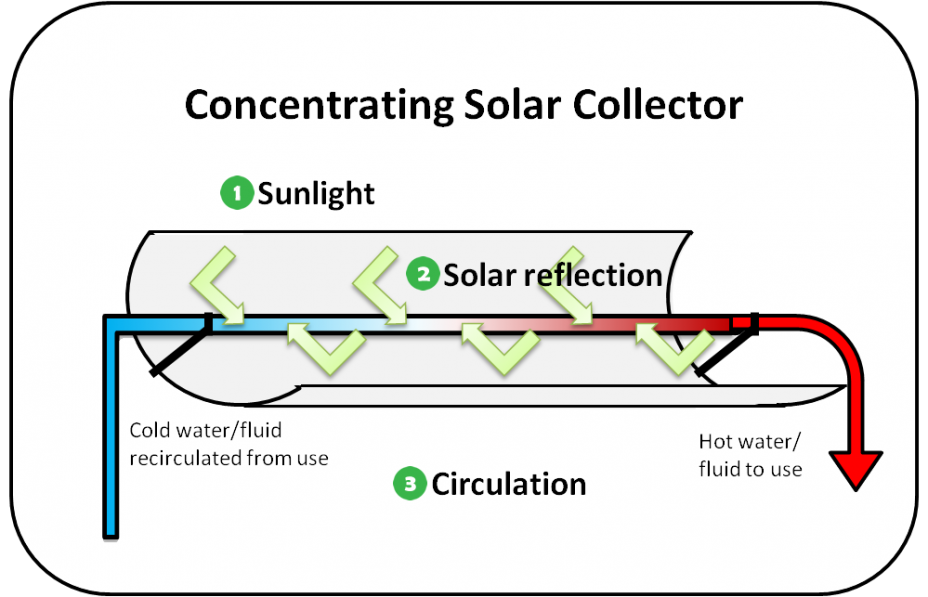
- Sunlight: Sunlight hits a reflective material (i.e., a mirrored surface), usually in the shape of a trough (shown here) or a dish.
- Solar reflection: The reflective material redirects the sunlight onto to a single point (for a dish) or a pipe (for a trough).
- Circulation: Cold water or a special heat transfer fluid circulates through the pipe, absorbing heat.
Concentrating systems are capable of producing enormously hot fluids for a variety of processes, and they can produce a relatively large amount of energy for each dollar invested. However, these systems tend to be much larger and more complex than the other types of solar collectors described above, with a higher total price tag. Thus, concentrating solar technology tends to be most effective for large-scale, high-temperature uses, although lower-temperature uses may still be cost-effective under certain circumstances.

